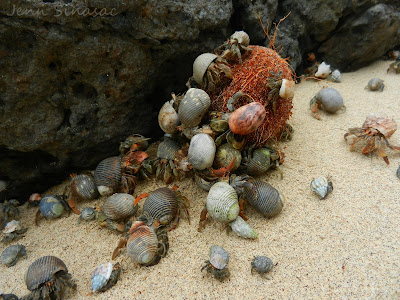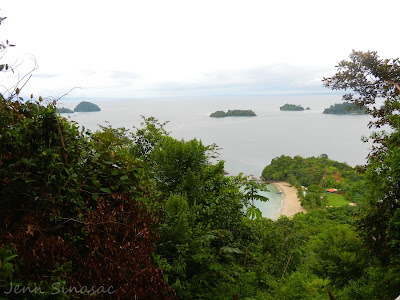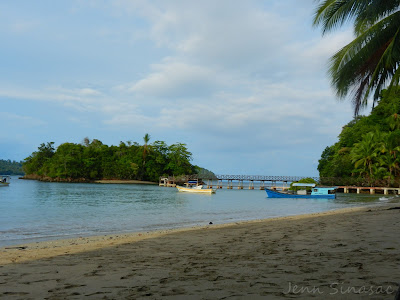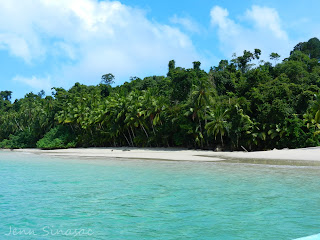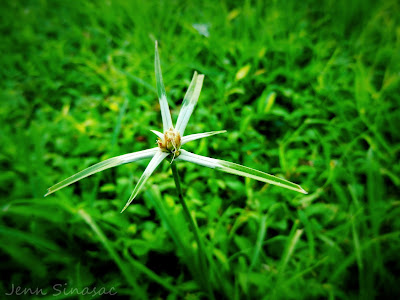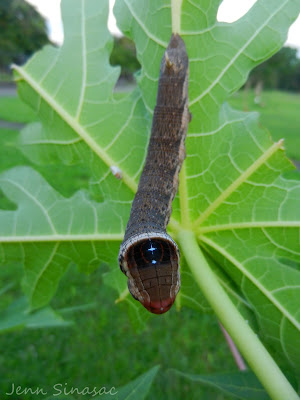After leaving Coiba Island and Santa Catalina, we decided to make a spontaneous trip up to Boquete, in the highlands of western Panama. Although it was still a fair ways further west toward Costa Rica, we thought we would take the opportunity to cool ourselves off before heading back to Gamboa. I had yet to visit Boquete, so I was looking forward to getting to know a new part of Panama. We arrived late, around 11 pm, and checked into a hostel near the main square in town.
 |
| River through Boquete town |
Boquete is situated at an elevation of 1200 metres, and is a popular little tourist town, full of ex-pats who have settled in the bustling town. Not far from Boquete is Volcan Baru, Panama's highest peak and only volcano. The town is surrounded by beautiful cloud forest, rivers, Friendship International Park (Parque Internacional La Amistad, shared with Costa Rica) and plenty of opportunities for tourism and exploration. Tour operators in Boquete offer river rafting and kayaking, volcano excursions, hiking, waterfalls, horseback riding, strawberry tours, hot springs and more. We just planned to have the day in Boquete, and wanted to make the most of it. In the morning, we walked around town, took some photos, and arranged a tour to visit the "Lost Waterfalls" in the afternoon. We were not prepared for cooler weather, so I bought a sweater from a lovely little Ecuadorian shop in town.
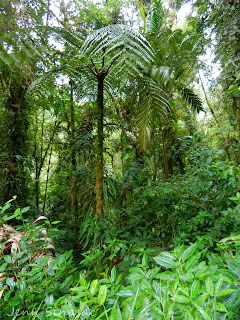 |
| Cloud forest |
Unfortunately, it started to rain just before our tour, on and off, at times heavy. When David, our guide, arrived, we talked about possibilities for the afternoon - visit the hot springs instead, or postpone the tour until tomorrow morning. But at that point it wasn't raining, so he suggested we drive to the trail head to see if the weather clears up. As we headed out of Boquete and up into higher elevation, it did brighten up and the rain stopped, so we started on our walk to see the waterfalls. We hiked up and up into beautiful cloud forest, draped with epiphytes and moss. Cloud forest is laden with mist, as its name suggests. It is a cool, humid environment, and receives a lot of rain throughout the year. Therefore, it is very lush and green, and supports a great diversity of wildlife. I find cloud forests incredibly refreshing, and the cool air was such a nice change to the hot, humid, sticky climate of Gamboa.
After a short hike, we arrived at a beautiful waterfall, ending in a pool of fresh mountain water. David said that we could swim here, but we felt that we had spent enough time in the water on the coast and preferred to stay dry; furthermore, the water is very, very cold! Not for me :) David showed us into a small cave beside the waterfall which contained a base of clay. There was also a nest of a species of swift, well-fastened to the wall of the cave, very cool! When we emerged from the cave, it started to rain. So we decided to head back. We took a different trail back, which brought us by another waterfall, taller than the first. Even though it was raining pretty hard, we still took advantage to eat our lunch, take photos and chat with David. Despite the rain, we really enjoyed our tour; although still learning, David was knowledgeable about the forest and key wildlife, and he even picked us some mountain blackberries on the way back to the truck.
 |
| Boquete waterfall |
It was a short trip to Boquete, but that breath of fresh air we received was exactly what we needed before heading back to the hot lowlands of central Panama. It is a beautiful place, situated in the shadows of Volcan Baru, and I am already looking forward to going back. Refreshed and ready to get back home, we boarded a night bus back to Panama City.
~ Jenn

